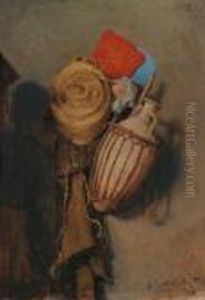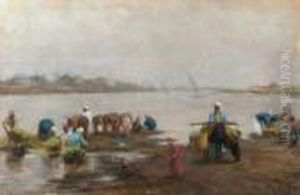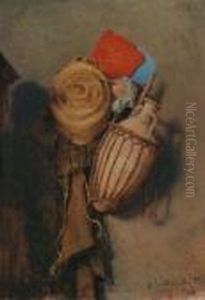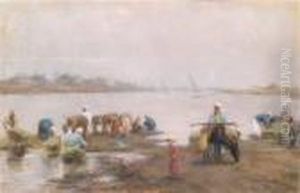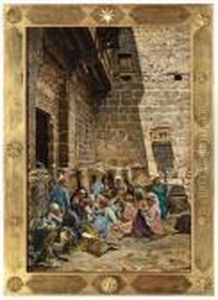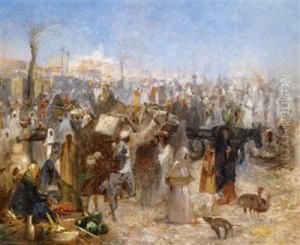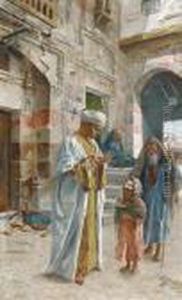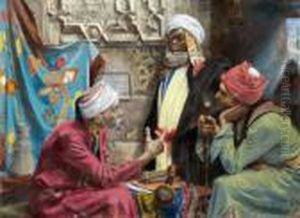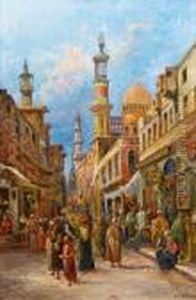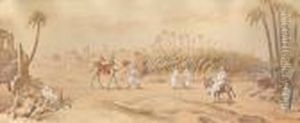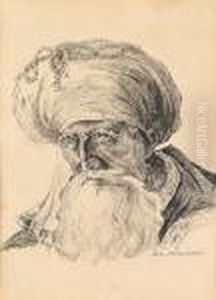Alphons Leopold Mielich Paintings
Alphons Leopold Mielich was an Austrian painter and illustrator, known primarily for his Orientalist themes and detailed architectural studies. Born on October 27, 1863, in Vienna, Austria, Mielich showed an early interest in art, which led him to study at the Academy of Fine Arts in Vienna under the guidance of Christian Griepenkerl and Leopold Müller.
Mielich's work is characterized by his fascination with the Near East, a common subject among European artists of the 19th century who were captivated by the exoticism and perceived mystique of the region. During his career, Mielich traveled extensively in the Ottoman Empire, particularly in regions that are now part of modern-day Turkey and Egypt. These travels greatly influenced his artistic output, as he often depicted scenes of daily life, historical buildings, and landscapes he encountered.
He was particularly adept at capturing the intricate details of Islamic architecture, which is evident in his careful renderings of mosques, bazaars, and palaces. His works often featured rich color palettes and elaborate compositions that reflected his deep appreciation for the ornate styles of the East.
Mielich's illustrations were also highly sought after, and he worked on several notable projects, including the illustrations for the book 'Das Grabmal Sultan's Ahmed in Konstantinopel' (The Tomb of Sultan Ahmed in Constantinople). This project is a testament to his skill in architectural drawing and his ability to convey the grandeur of such monuments.
Despite his talent and the quality of his work, Alphons Leopold Mielich is not as widely recognized today as some of his contemporaries. This may be due to the shifting tastes in art and the complex politics of Orientalism in modern scholarship. Nonetheless, his contributions to the field of art, particularly in terms of his depictions of the Near East, continue to be appreciated by art historians and collectors.
Alphons Leopold Mielich passed away on May 5, 1929, in Vienna. His legacy lives on through his paintings and illustrations, which remain valuable records of a European artist's perspective on the East during a time of great fascination and romanticization of Oriental cultures.


